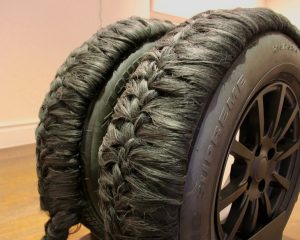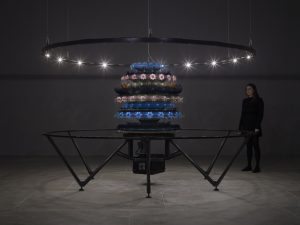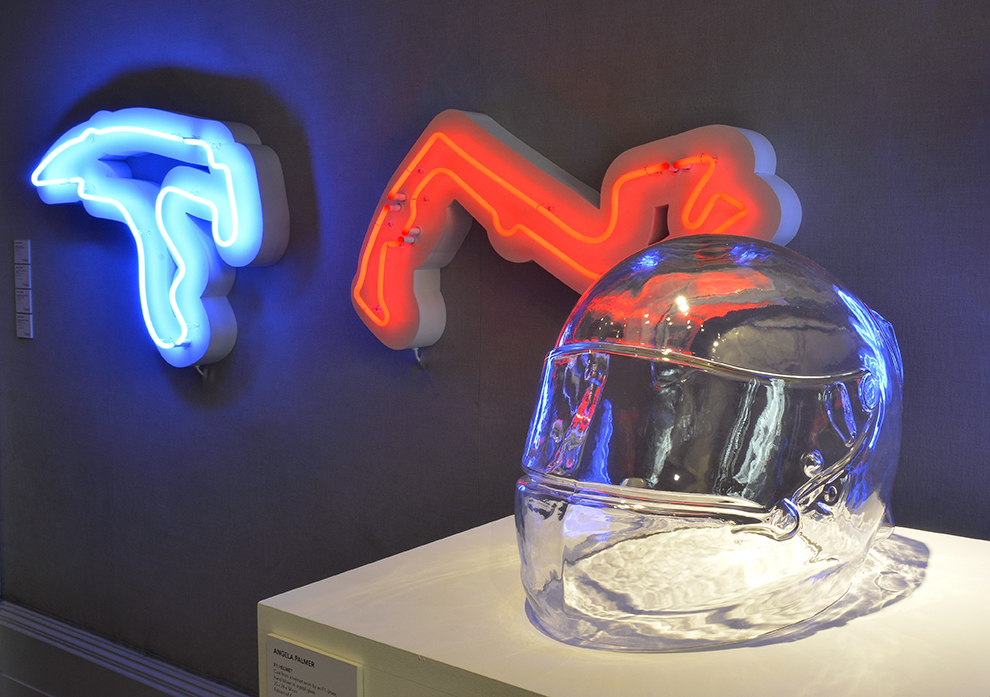
F1 Helmet Glass Crystal Helmet and others_Courtesy of Angela Palmer and The Fine Art Society
The Fine Art Society, Est. 1876, 148 New Bond Street, London W1S 2JT www.faslondon.com
‘Adrenalin’ is a new exhibition by Angela Palmer at Fine Art Society
Artist Angela Palmer was given unprecedented access to the highly secretive world of Formula 1 engineering to realise an extraordinary collection of sculptures for her solo show.
In collaboration with Renault Sport F1, Palmer deconstructed the world’s most successful F1 engine, the RS27, with the help of Renault’s pioneering engineers at their F1 laboratory in Paris.
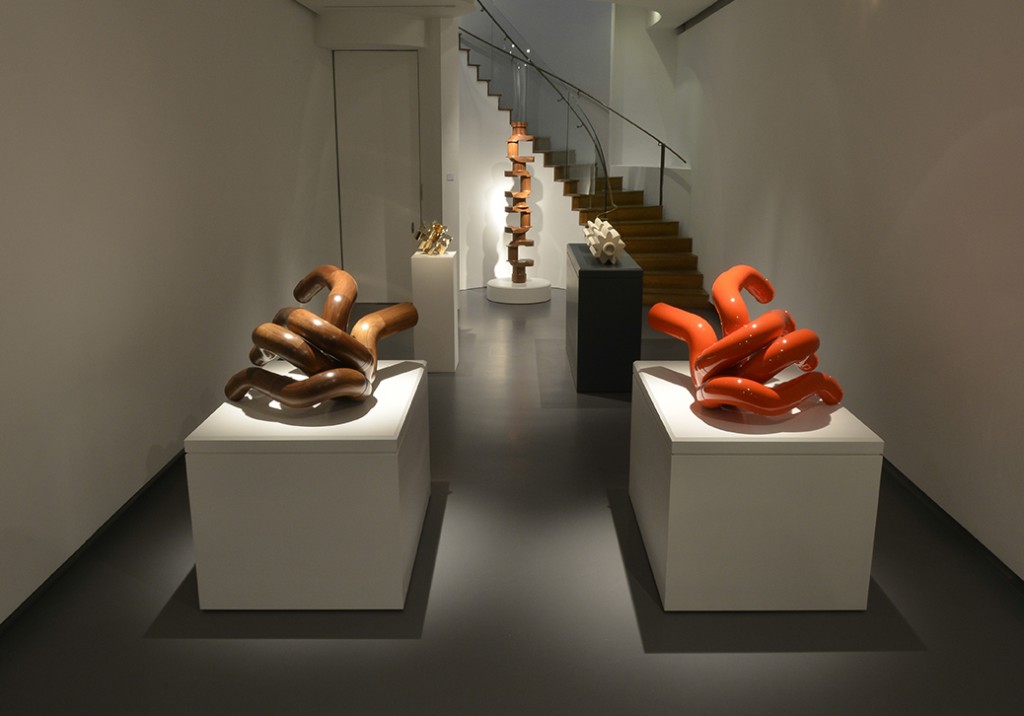
Exhausts and others Courtesy of Angela Palmer and The Fine Art Society.
Palmer has upscaled dramatically individual components of the V8, using a variety of materials, from walnut to Portland stone and bronze. For the project, she was supplied with the engineers’ CAD drawings as well as unique engine parts from the V8, material normally guarded with the strictest secrecy to prevent industrial espionage. However a dramatic rule change from 2013 to 2014 saw downsized turbocharged V6 Power Units equipped with newly developed energy recovery systems replace the V8. It was this change that provided the unique opportunity for Renault to unlock its sensitive data to Palmer.
Palmer’s interest in engines began with the realisation that over 2 billion people in the world drive cars, yet few have any idea what lies under the bonnet:
“How many of us know what a crankshaft looks like, never mind its function? I wanted to peel back that mysterious layer and reveal the astonishing piece of engineering which creates this mechanical ‘beating heart’ that’s so close to all of us, often all day, every day,” said Palmer. “Through the sculptures, I wanted to shift the focus from function and mechanism to the visual power of form and material.”

V8 Engine Glass Engine_Courtesy of Angela Palmer and The Fine Art Society
She began her research by ordering a plastic build-your-own engine online. From there she bought a Datsun Cherry engine from her local scrapyard and spent weeks taking it apart to examine the sculptural potential for each part.
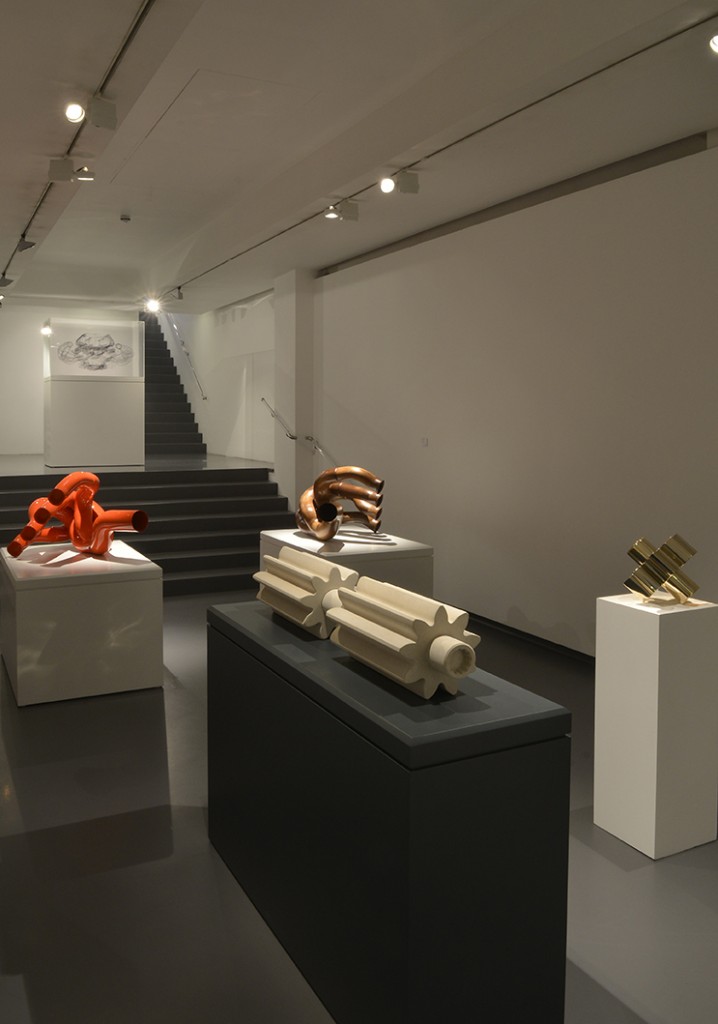
Part 6 Portland Stone Double Cog and others_Courtesy of Angela Palmer and The Fine Art Society
When introduced to the President of Renault Sport F1 some months later, Palmer was given the opportunity to work on the V8, the most advanced internal combustion engine in the world, at their headquarters in Viry-Chatillon in Paris. Spending a day in the laboratories of the Renault Sport F1 team was, she said, “more akin to a scene from a neuroscience laboratory than a factory.” Palmer was able to observe the astonishing precision behind the construction of the engines, “each piece is a work of engineering genius, numbered and inscribed, engineered down to the last micron.”
www.faslondon.com
About The Artist
Angela Palmer is a sculptor and installation artist. Born in Scotland and based in Oxford, she studied at the Ruskin School of Drawing and Fine Art in Oxford and the Royal College of Art in London.
A key work by the artist is ‘The Ghost Forest’, a group of 10 mighty rainforest tree stumps with their roots intact, which she brought from a logged virgin rainforest in Africa and exhibited in Trafalgar Square, Copenhagen, Oxford and Wales.
A key theme in her work is the desire to ‘map’ and she has re-interpreted the human and animal form through her use of CT and MRI scans; she created her brain as a three-dimensional drawing in a glass chamber by engraving details of MRI slices on multiple glass sheets; this was unveiled as a permanent exhibit at the Scottish National Portrait Gallery earlier this year. Palmer’s glass sculpture of an Egyptian child mummy is in the permanent collection of the Ashmolean Museum. She has enjoyed the opportunity to work with scientists in every conceivable discipline, from radiologists and botanists, to engineers, astrophysicists, veterinary scientists and paediatric dentists specialising in Egyptian child mummies.
Her installation ‘Searching for Goldilocks’, which is in the collection of the Smithsonian’s National Air and Space Museum in Washington, represents NASA’s search for habitable planets.

